Ensheathing glia function as phagocytes in the adult Drosophila brain
- PMID: 19369546
- PMCID: PMC2674269
- DOI: 10.1523/JNEUROSCI.5951-08.2009
Ensheathing glia function as phagocytes in the adult Drosophila brain
Abstract
The mammalian brain contains many subtypes of glia that vary in their morphologies, gene expression profiles, and functional roles; however, the functional diversity of glia in the adult Drosophila brain remains poorly defined. Here we define the diversity of glial subtypes that exist in the adult Drosophila brain, show they bear striking similarity to mammalian brain glia, and identify the major phagocytic cell type responsible for engulfing degenerating axons after acute axotomy. We find that neuropil regions contain two different populations of glia: ensheathing glia and astrocytes. Ensheathing glia enwrap major structures in the adult brain, but are not closely associated with synapses. Interestingly, we find these glia uniquely express key components of the glial phagocytic machinery (e.g., the engulfment receptor Draper, and dCed-6), respond morphologically to axon injury, and autonomously require components of the Draper signaling pathway for successful clearance of degenerating axons from the injured brain. Astrocytic glia, in contrast, do not express Draper or dCed-6, fail to respond morphologically to axon injury, and appear to play no role in clearance of degenerating axons from the brain. However, astrocytic glia are closely associated with synaptic regions in neuropil, and express excitatory amino acid transporters, which are presumably required for the clearance of excess neurotransmitters at the synaptic cleft. Together these results argue that ensheathing glia and astrocytes are preprogrammed cell types in the adult Drosophila brain, with ensheathing glia acting as phagocytes after axotomy, and astrocytes potentially modulating synapse formation and signaling.
Figures


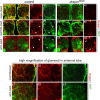
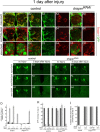
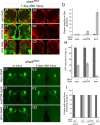
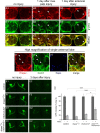
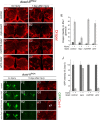
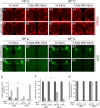
Similar articles
-
Early Draper-mediated glial refinement of neuropil architecture and synapse number in the Drosophila antennal lobe.Front Cell Neurosci. 2023 Jun 2;17:1166199. doi: 10.3389/fncel.2023.1166199. eCollection 2023. Front Cell Neurosci. 2023. PMID: 37333889 Free PMC article.
-
The Drosophila cell corpse engulfment receptor Draper mediates glial clearance of severed axons.Neuron. 2006 Jun 15;50(6):869-81. doi: 10.1016/j.neuron.2006.04.028. Neuron. 2006. PMID: 16772169
-
Negative regulation of glial engulfment activity by Draper terminates glial responses to axon injury.Nat Neurosci. 2012 Mar 18;15(5):722-30. doi: 10.1038/nn.3066. Nat Neurosci. 2012. PMID: 22426252 Free PMC article.
-
The functional organisation of glia in the adult brain of Drosophila and other insects.Prog Neurobiol. 2010 Apr;90(4):471-97. doi: 10.1016/j.pneurobio.2010.01.001. Epub 2010 Jan 29. Prog Neurobiol. 2010. PMID: 20109517 Free PMC article. Review.
-
Drosophila Central Nervous System Glia.Cold Spring Harb Perspect Biol. 2015 Feb 26;7(11):a020552. doi: 10.1101/cshperspect.a020552. Cold Spring Harb Perspect Biol. 2015. PMID: 25722465 Free PMC article. Review.
Cited by
-
Independent glial subtypes delay development and extend healthy lifespan upon reduced insulin-PI3K signalling.BMC Biol. 2020 Sep 14;18(1):124. doi: 10.1186/s12915-020-00854-9. BMC Biol. 2020. PMID: 32928209 Free PMC article.
-
Monitoring cell-cell contacts in vivo in transgenic animals.Development. 2016 Nov 1;143(21):4073-4084. doi: 10.1242/dev.142406. Epub 2016 Sep 22. Development. 2016. PMID: 27660327 Free PMC article.
-
Ecdysone acts through cortex glia to regulate sleep in Drosophila.Elife. 2023 Jan 31;12:e81723. doi: 10.7554/eLife.81723. Elife. 2023. PMID: 36719183 Free PMC article.
-
The Drosophila ERG channel seizure plays a role in the neuronal homeostatic stress response.PLoS Genet. 2019 Aug 8;15(8):e1008288. doi: 10.1371/journal.pgen.1008288. eCollection 2019 Aug. PLoS Genet. 2019. PMID: 31393878 Free PMC article.
-
Pvr receptor tyrosine kinase signaling promotes post-embryonic morphogenesis, and survival of glia and neural progenitor cells in Drosophila.Development. 2018 Dec 4;145(23):dev164285. doi: 10.1242/dev.164285. Development. 2018. PMID: 30327326 Free PMC article.
References
-
- Auld VJ, Fetter RD, Broadie K, Goodman CS. Gliotactin, a novel transmembrane protein on peripheral glia, is required to form the blood-nerve barrier in Drosophila. Cell. 1995;81:757–767. - PubMed
-
- Awasaki T, Tatsumi R, Takahashi K, Arai K, Nakanishi Y, Ueda R, Ito K. Essential role of the apoptotic cell engulfment genes draper and ced-6 in programmed axon pruning during Drosophila metamorphosis. Neuron. 2006;50:855–867. - PubMed
-
- Bainton RJ, Tsai LT, Schwabe T, DeSalvo M, Gaul U, Heberlein U. moody encodes two GPCRs that regulate cocaine behaviors and blood-brain barrier permeability in Drosophila. Cell. 2005;123:145–156. - PubMed
-
- Barres BA. The mystery and magic of glia: a perspective on their roles in health and disease. Neuron. 2008;60:430–440. - PubMed
Publication types
MeSH terms
Grants and funding
LinkOut - more resources
Full Text Sources
Molecular Biology Databases
